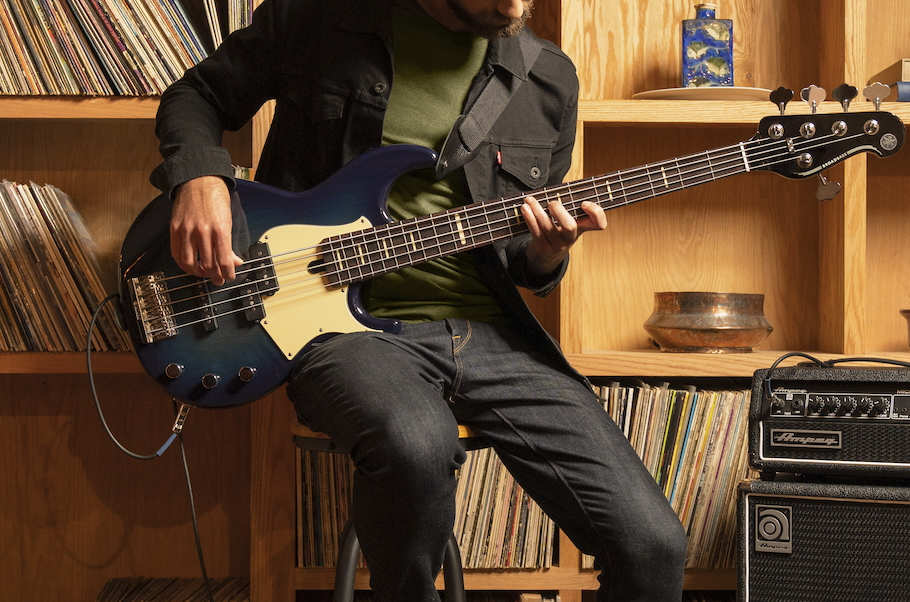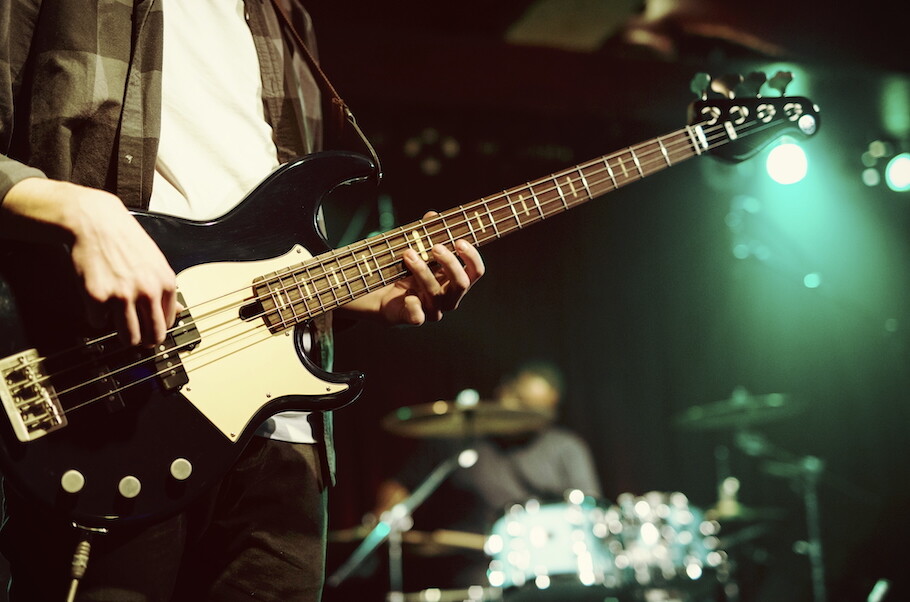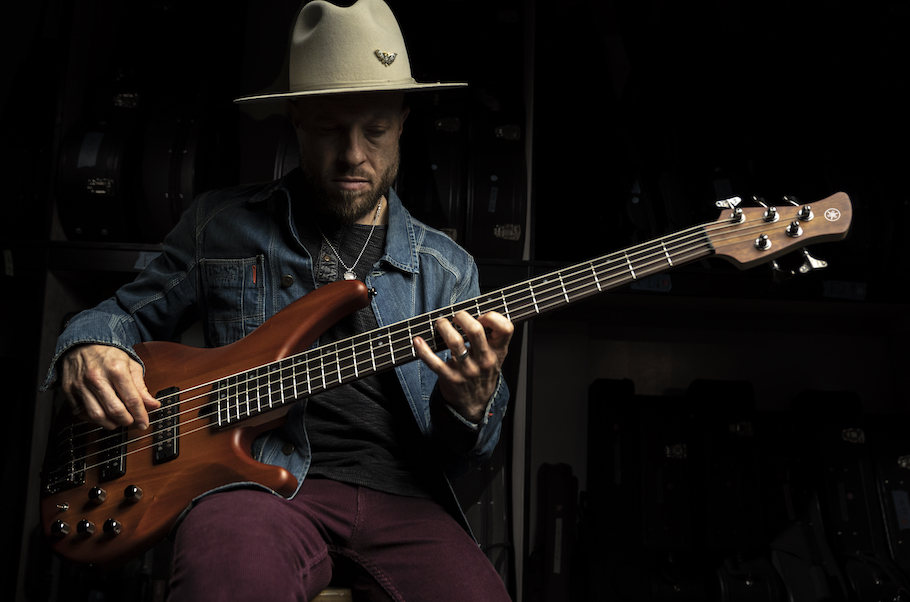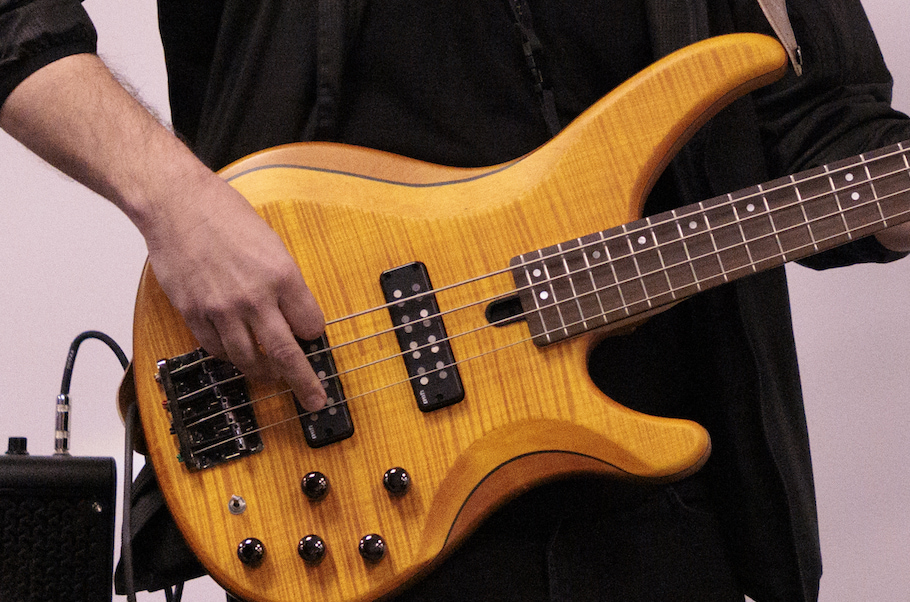A Guide to Bass Fingerboards
It’s where the action is.
Just about everyone has heard the phrase, “where the rubber meets the road.” It refers to the critical moment of truth where an idea or theory is tested or where an effort translates into a result. In the context of playing the bass, this happens when you press a string down on the fingerboard so that a note sounds when that same string is plucked, picked or slapped with your other hand.
Whether fretted or fretless, the fingerboard is where the action is. It makes sense, therefore, that the materials chosen for the fingerboard — usually a wood such as rosewood, maple or ebony, or possibly even a synthetic material — play a big role in the sonics, as well as the look and feel of the bass.
In this article, we’ll take a quick look at some of the materials used to make bass fingerboards. We’ll start with the big three — the most popular and common choices — then quickly run through a handful of more exotic and synthetic options. Finally, we’ll examine how fingerboards interact with the neck materials to influence the sound of the bass.
The Big Three
Rosewood
Rosewood is a porous, oily wood renowned for its warm, rich tonal character that mellows out strident highs, which is probably the reason why it’s the most popular choice for bass fingerboards. It has a distinctive, earthy color too — dark brown, like chocolate, with some redness to it — and there are mainly two types: Indian rosewood and Brazilian. (The latter is harder and denser, but more rare, and therefore much more expensive.) Rosewood is the fingerboard material of choice for most Yamaha BB Series basses.

Maple
This popular light-colored sustainable wood is hard and typically has a tight grain pattern, but fancier cuts can come with a beautiful flame, curly or birdseye grain. Maple fingerboards lends basses a very bright, sparkling tonal quality, with lots of sustain. However, unlike rosewood, maple doesn’t have a high oil content, so it requires a gloss or satin finish. When the finish wears away over time, the wood in those naked spots turns a weathered grey. The Yamaha Billy Sheehan Attitude 30th Anniversary bass is a shining, scalloped example of maple’s vibrant glory.

Ebony

There are two type of ebony you’ll typically see on basses — Indian and Macassar. Usually a deep, dark brown or even completely black, ebony delivers snappy highs and beefy lows. Hard, heavy and dense, it withstands string wear better than most other woods. The Yamaha Nathan East Signature BBNE2 bass features a distinctive all-ebony fingerboard inlaid with figured abalone, as shown in the illustration on the right.

The Other Contenders
Laurel
A great alternative to rosewood, laurel has a slightly more pronounced grain structure and a similar tonal quality. Laurel fingerboards are found on some Yamaha RBX Series basses.

Cocobolo
This tropical hardwood is similar to rosewood in both tone and oil content, and is available in a wide variety of colors. It has a straight grain pattern and is harder than ebony, which makes it a great choice to resist the grinding string wear of roundwound strings. Incredibly dense and hard, it is known to dull saw blades quickly, and like ebony, is quite expensive.
Pau ferro
The import/export regulations in place for rosewood to keep it from being overharvested have helped to elevate pau ferro’s popularity as a suitable and inexpensive substitute. To my ear, it’s a relatively neutral-sounding wood with a bit of snap, landing somewhere between rosewood and maple.
Walnut
Revered by furniture makers for its beautiful, undulating grain pattern and rich, chocolate color, walnut has a warmth to its sound, but it’s an expensive material and probably more of an aesthetic choice than a sonic one.
Wenge
This looks like a chic version of rosewood — in a good way — and sounds a lot like it too, with an earthy tone.
Synthetics
Ebanol
Essentially the same material used to make bowling balls, this looks and feels a lot like ebony, but is smoother and harder.
Phenolic
This synthetic is created from glass, cotton and/or paper fabric heated under pressure with resin to create a highly durable material. Naysayers accuse it of sounding like plastic — whatever that means — but I’d say it’s maple-esque, with tight, pronounced highs.
Richlite
Manufactured from resin-infused paper and phenolic (see above), richlite is often touted as a synthetic replacement for ebony and boasts similar sonic qualities.
Rocklite
These man-made synthetic wood products with their own “grain” patterns also look, feel and sound very similar to ebony.
Neck Materials Accentuate the Positive
While the fingerboard makes a big impact on your bass’s sound, so do the materials used to make the neck (usually wood, but sometimes synthetics like carbon graphite or metals like aluminum). The neck’s main job is to provide stiffness that can withstand the constant pressure of your strings, but it also adds to the sonic character of the bass. Keep in mind that the fingerboard is bonded to the neck, so different combinations of materials will influence the sound in different ways. A good way to illustrate these nuances is to compare the various Yamaha Signature model basses:
– The Billy Sheehan Attitude 30th (as well as its older relative, the Attitude Limited 3), has both a maple fingerboard and a maple neck. This all-maple sandwich helps deliver a full-bodied, aggressive tone with tight lows, growling mids and brights that sizzle, along with gobs of sustain.
– The Peter Hook Signature BBPH features a rosewood fingerboard married to a 5-piece maple and mahogany neck. Upper register lines sing sweetly on the rosewood, while the mahogany accentuates the harmonic mids and blends them with the maple’s innate brightness.

– The Nathan East Signature BBNE2 employs a 5-piece maple/mahogany neck with an ebony fingerboard that helps give it snap and tonal consistency.
– The John Patitucci TRBJP2 fuses a three-piece maple neck with an ebony fingerboard for clear, glistening articulation.

Each of these basses sound, look, and play great, but the choice of fingerboard, neck and body materials made by these Signature artists helps give their namesake basses their unique sound and appeal. There’s an important lesson to be learned there!
Check out Michael’s other blog posts.
Click here for more information about Yamaha basses.















